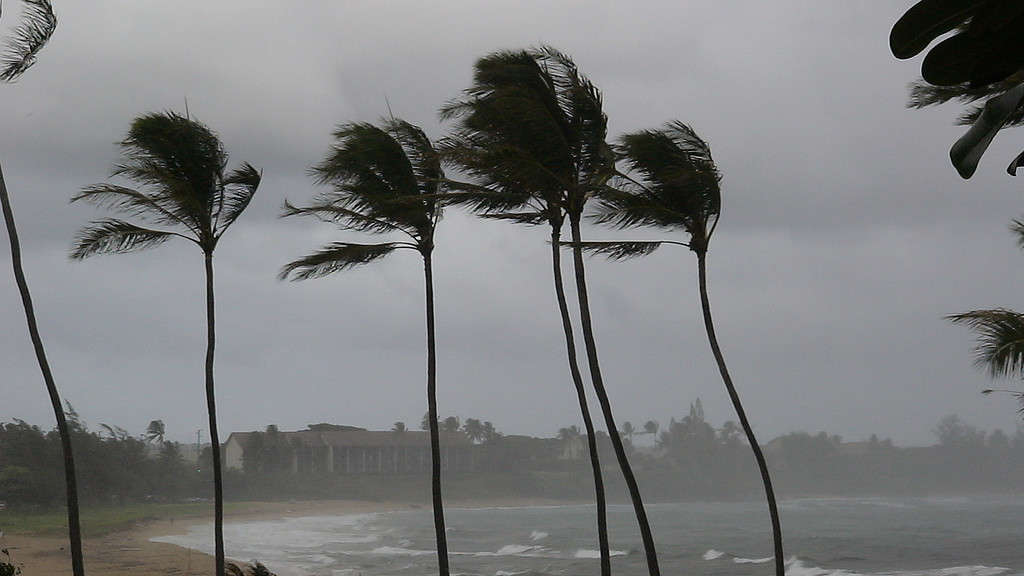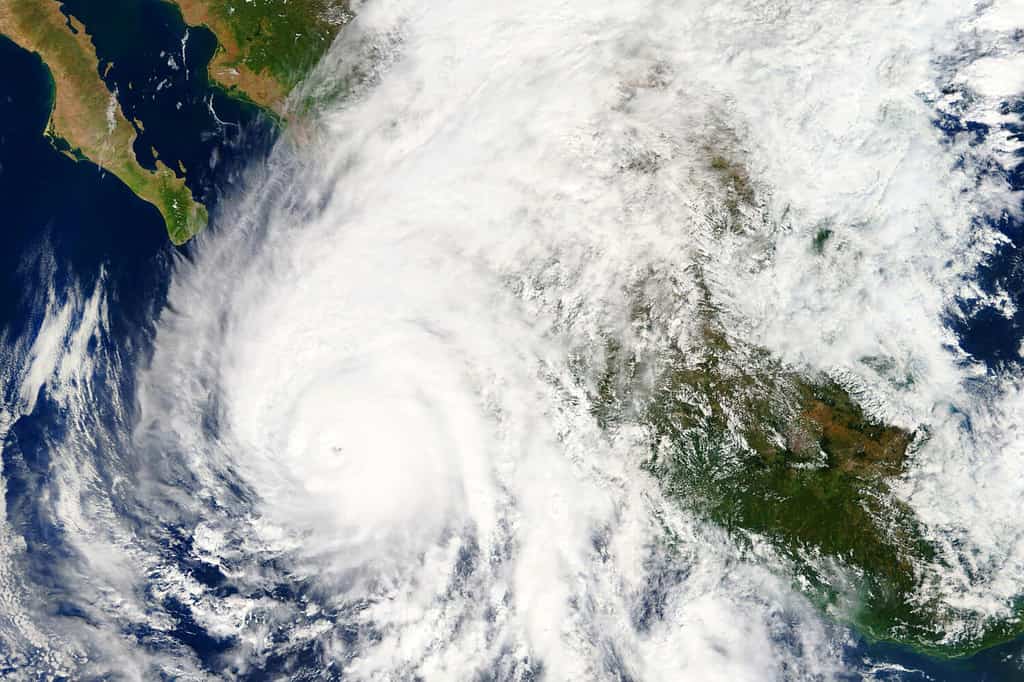Hurricane season is something that happens every single year. There is no escaping it because these weather phenomena happen in the Pacific Ocean, as well as the other oceans in the world. You’ve heard in the news about the hurricanes that have devastated places like Florida and Louisiana, but those are Atlantic Ocean hurricanes. There are also hurricanes in the Pacific Ocean. These hurricanes are particularly intense in Asia, Oceania, Mexico, and less so in the United States. When it comes to 2024, the Pacific hurricane season is almost upon us. Let’s take a look at the 2024 Pacific hurricane season — its start date, end date, and the myriad of potential names.
Hurricane Severity Levels

The largest hurricane that has ever been recorded is Typhoon Tip, which occurred in the Northwest Pacific Ocean in 1979.
©Chieh Cheng/iStock via Getty Images
When a hurricane touches land, there is a wind scale to determine the severity of said hurricane. The Saffir-Simpson Hurricane Wind Scale was created to determine the hurricane levels and what kind of emergency preparedness is needed from the government and its residents. There are five categories of hurricanes, ranging from Category 1 (minimal destruction) to Category 5 (the worst kind of destruction). Here are the categories of hurricanes and their descriptions.
- Category 1: Wind speeds of 74-95 MPH and minimal damage.
- Category 2: Wind speeds of 96-110 MPH and widespread damage from strong winds.
- Category 3: Wind speeds of 111-129 MPH and extensive damage from dangerous winds.
- Category 4: Wind speeds of 130-156 MPH and devastating damage from dangerous winds.
- Category 5: Wind speeds of more than 156 MPH and catastrophic damage.
2024 Hurricane Season Start and End Dates

Many hurricanes occur out in the sea, however, sometimes they do hit land and can cause devastation.
©lavizzara/Shutterstock.com
The 2024 hurricane season in the Pacific Ocean is going to begin on two different dates, depending on the region where the hurricane lies. Hurricane season will start on May 15, 2024, in the eastern Pacific Ocean, which is east of the 140th meridian west longitude line. For the central Pacific Ocean, which is between the 140 meridian west line and the International Date Line, hurricane season will start on June 1, 2024. Both hurricane seasons end on November 30, 2024.
Because of the potential severity of hurricanes in the future due to climate change, there are regular updates about potential hurricanes making land. Both the Central Pacific Hurricane Center and the National Hurricane Center are the entities that come out with constant updates on all hurricane formations in 2024.
Potential Names of the 2024 Hurricane Season

Hurricanes in the southern hemisphere rotate clockwise, and hurricanes in the northern hemisphere rotate anti-clockwise.
©1xpert/iStock via Getty Images
All hurricanes are given names. British meteorologist Clement Wragge was the first person to come up with naming hurricanes after people’s names. Since then, meteorologists in countries worldwide have named each hurricane that has come to fruition with a name. Usually, if the name is extremely catastrophic, it is never used again. Typically, however, names are recycled every number of years. Eastern North Pacific hurricane names are usually recycled every 6 years. For those hurricanes that are in the Central North Pacific, there are four lists with many names in each list that are used.
Eight governmental institutions name cyclones and hurricanes. The United States usually names the Northern Pacific names and Central North Pacific names, whereas Japan usually names Western Pacific hurricanes and cyclones.
The following names will be used in 2024 for the Eastern North Pacific Ocean basin:
| Name | Name | Name |
|---|---|---|
| Aletta | Ileana | Rosa |
| Bud | John | Sergio |
| Carlotta | Kristy | Tara |
| Daniel | Lane | Vicente |
| Emilia | Miriam | Willa |
| Fabio | Norman | Xavier |
| Gilma | Olivia | Yolanda |
| Hector | Paul | Zeke |
Deadliest Pacific Hurricanes Recorded
We all know there are deadly hurricanes that have devastated entire communities and even regions. When it comes to the Pacific Ocean, there have been hurricanes that have been extremely deadly with many fatalities. Let’s take a look at the five deadliest Pacific Ocean hurricanes recorded.
- 1959 Mexico Hurricane: October 22-28, 1959; 1,800 fatalities; $280 million in damage.
- Hurricane Paul: September 18-30, 1982; 1,625 fatalities; $520 million in damage; struck Mexico and Central America.
- Hurricane Liza: September 25-October 2, 1976; 1,263 fatalities; $100 million in damage; struck Mexico.
- Hurricane Tara: November 10-12, 1961; 436 fatalities; $16 million in damage; struck Mexico.
Conclusion
And there you have it, the Pacific hurricane season begins in the springtime. Specifically, the 2024 Pacific hurricane season starts on two different dates, depending on the area of the Pacific Ocean. The Pacific hurricanes can be just as deadly as other hurricanes throughout the world. There have been deadly hurricanes that have struck land and completely devastated entire communities. Those who live by the coasts in Asia, Oceania, and the Americas, need to be prepared for any type of hurricanes that might hit their way.
The photo featured at the top of this post is © Evgeniyqw/Shutterstock.com
Thank you for reading! Have some feedback for us? Contact the AZ Animals editorial team.







